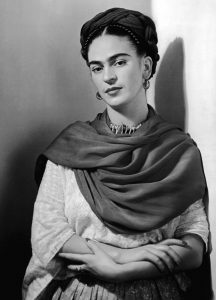What’s Your Message?
Learning Goals
In this chapter, you will learn to:
- Use the suffixes -less, -tion, -al, and -ful to understand the meaning of words
- Discuss and respond to the digital story Go Around
- Analyze characters
- Use compound sentences
- Use semi-colons in compound sentences
- Write a narrative paragraph about a story from your childhood

Get Ready to Read
- Think back to stories you heard as a child. Share a story from your childhood that had a lesson.
- Think of an experience you had that taught you a lesson. What was the experience? What did you learn?
Vocabulary
Scan What’s Your Message to find a bold word for each of the following.
1. An event that is not planned and causes harm
2. An understanding of something, or the message of something
3. Someone who puts energy into something
4. Something used to treat pain or illness
5. The people who watch, read, or listen to something
6. Think carefully about something
7. Full of meaning, importance, and value
8. Eagerly using an opportunity
9. Identified an illness in someone
10. Looking at something closely to learn about it
Word Patterns
–less is a suffix that means “without.”
–tion is a suffix that means “the act of.”
–al is a suffix that means “related to.”
–ful is a suffix that means “full of.”
Use the vocabulary words and affixes above to build a word for each definition below.
11. ___________________________: full of insight
12. ___________________________: the act of examining
13. ___________________________: the act of reflecting
14. ___________________________: related to medicine
15. ___________________________: to have no meaning
Reading Strategy
Readers check their understanding of a text while they read. One strategy is to stop a few times in the text to ask yourself: Can I answer any of the five W questions: who, what, where, when, or why? If you are able to answer at least three of these questions, then you are thinking about what you are reading.
Try this strategy as you read What’s Your Message?
Check Your Understanding
1. According to the text, what kinds of stories do we tend to remember best?
2. What are two purposes of storytelling mentioned in the text?
3. What two things caused Cathy to feel afraid to speak up and use her voice?
4. How does Go Around show who Cathy is, and why she is who she is?
Writing Task
Think about the seed of a story you selected in the last chapter. How does this story show who you are? How does this story show why you are who you are?
Compound Sentences
In this book, you are learning to write simple sentences, compound sentences, and complex sentences. Using a variety of sentence types can make your writing more interesting. A variety of sentences can also help your writing flow more smoothly.
Grammar Rule
A compound sentence is made by joining two complete sentences using a comma and one of these joining words: for, and, nor, but, or, yet, or so. To remember these joining words, think of the word FANBOYS.
| For | Use to explain | I will not ride my bike today, for it is raining. |
| And | Use to add information | Today I visited my sister, and we had a really good talk. |
| Nor | Use to list items that are not options | I will not sell my ring, nor will I give it away. |
| But | Use to show contrast | We have run out of blueberry pie, but we still have apple pie. |
| Or | Use to list options | Do you want to watch Jaws, or would you rather watch Titanic? |
| Yet | Use to add surprising information | It takes 42 muscles to frown, yet it only takes 17 muscles to smile. |
| So | Use to show cause and effect | I had a cold, so I drank some orange juice. |
Combine the two complete sentences into one compound sentence. Replace the period with a comma and one of the appropriate FANBOYS.
1. The heat was too much. I took a cold shower.
2. The Canadian North is called the Land of the Midnight Sun. Sometimes the sun shines all day and all night.
3. It was a very expensive restaurant. The service was terrible.
4. We wanted to put a vegetable garden in the yard. The landlord said we could.
5. I want to travel to the United States. I don’t have a passport.
6. Do you want a marshmallow? Would you rather roast a wiener?
Semi-Colons
Grammar Rule
You have learned to write complete sentences. You have also learned to write compound sentences by joining two complete sentences together using a comma and one of the FANBOYS. You can also use a semi-colon to join two complete sentences together. This is only done when the two sentences are closely related.
For example, it is correct to write:
- I will not ride my bike today. It is raining.
- I will not ride my bike today, for it is raining.
- I will not ride my bike today; it is raining.
- It takes 42 muscles to frown. It only takes 17 muscles to smile.
- It takes 42 muscles to frown, but it only takes 17 muscles to smile.
- It takes 42 muscles to frown; it only takes 17 muscles to smile.
Below are some simple sentences and compound sentences. Rewrite them using a semi-colon.
1. It was a miracle that Frida Kahlo lived past 18 years old. She was in a terrible bus accident that broke her spine in three places.
2. Frida was in a lot of pain, so a nurse brought her some art supplies to take her mind off it.
3. Frida used painting as a way to express the pain she was in. Her art spoke to people even though she had no special training as an artist.
4. Frida’s paintings became famous, and she is now known as one of Mexico’s greatest artists.
5. Frida spent a lot of time in bed, so she surrounded herself with monkeys, dogs, parrots, and frogs for company.
6. Frida Kahlo’s house is now a museum. People can go there to see many of her original paintings.

Writing Task
Follow the steps below to write a narrative paragraph about a story from your childhood that has a lesson.
1. Think: Brainstorm a list of stories you heard as a child. Think of ones that are meant to teach a lesson. Then, choose the one story you want to tell.
2. Organize: Ask your instructor for the Tell a Story worksheet, or open and print one from the link. You will also find a printable version in Appendix 1. Fill in the outline with the story events. Put them in the correct order.
3. Write: Follow your outline as you write a first draft of your narrative paragraph. Don’t worry too much about spelling and grammar. Just get your ideas down in a way that makes sense. At this point, you may want to put your draft aside so you can look at it with fresh eyes later.
4. Edit: Use a different colour to make edits to your writing. Check to see how it sounds when you read it out loud. Is the meaning clear? Are there any details that are missing or off topic? Should you use different sentence types to make it flow more smoothly? Are there any words that you want to change to make your writing more alive? (Use a thesaurus to find more interesting vocabulary.) Are all your sentences complete? Do you need to check the spelling of any words in a dictionary?
5. Rewrite: Write a final copy of your paragraph that includes all your edits. You may wish to type it on a computer. Finally, hand it in to your instructor.
Answer Key
| Vocabulary | |
| QUESTION | ANSWER |
| 1 | accident |
| 2 | insight |
| 3 | active |
| 4 | medicine |
| 5 | audience |
| 6 | reflect |
| 7 | meaningful |
| 8 | embracing |
| 9 | diagnosed |
| 10 | examining |
| 11 | insightful |
| 12 | examination |
| 13 | reflection |
| 14 | medical or medicinal |
| 15 | meaningless |
| Check Your Understanding | |
| QUESTION | ANSWER |
| 1 | The kinds of stories we tend to remember best are the ones that hold an insight into what it means to be human. |
| 2 | One purpose of storytelling mentioned in the text is for the storyteller to share an important lesson with the audience. A second purpose of storytelling is for the storyteller to find a lesson. |
| 3 | Cathy felt afraid to speak up and use her voice because she was in an abusive relationship. She also once warned a pilot that the helicopter was in danger, but he did not listen. |
| 4 | Answers may vary. Go Around shows that Cathy is strong and brave. She was strong and brave enough to speak up when a situation was not safe, even though she had a history of staying quiet or being unheard. An experience of being listened to helped her be the person she is today: someone who is confident and able to use her voice. |
| Compound Sentences | |
| QUESTION | ANSWER |
| 1 | The heat was too much, so I took a cold shower. |
| 2 | The Canadian North is called the Land of the Midnight Sun, for sometimes the sun shines all day and all night. |
| 3 | It was a very expensive restaurant, yet the service was terrible. (but is also possible) |
| 4 | We wanted to put a vegetable garden in the yard, and the landlord said we could. |
| 5 | I want to travel to the United States, but I don’t have a passport. |
| 6 | Do you want a marshmallow, or would you rather roast a wiener? |
| Semi-Colons | |
| QUESTION | ANSWER |
| 1 | It was a miracle that Frida Kahlo lived past 18 years old; she was in a terrible bus accident that broke her spine in three places. |
| 2 | Frida was in a lot of pain; a nurse brought her some art supplies to take her mind off it. |
| 3 | Frida used painting as a way to express the pain she was in; her art spoke to people even though she had no special training as an artist. |
| 4 | Frida’s paintings became famous; she is now known as one of Mexico’s greatest artists. |
| 5 | Frida spent a lot of time in bed; she surrounded herself with monkeys, dogs, parrots, and frogs for company. |
| 6 | Frida Kahlo’s house is now a museum; people can go there to see many of her original paintings. |
Attributions
Megaphone
Image by mickyroo is in the public domain.
Frida Kahlo
Frida1 by Caferspar is used under a CC BY SA 4.0 license.

